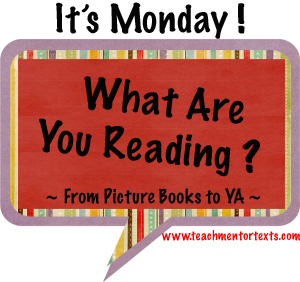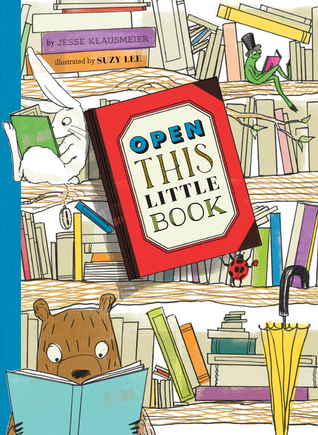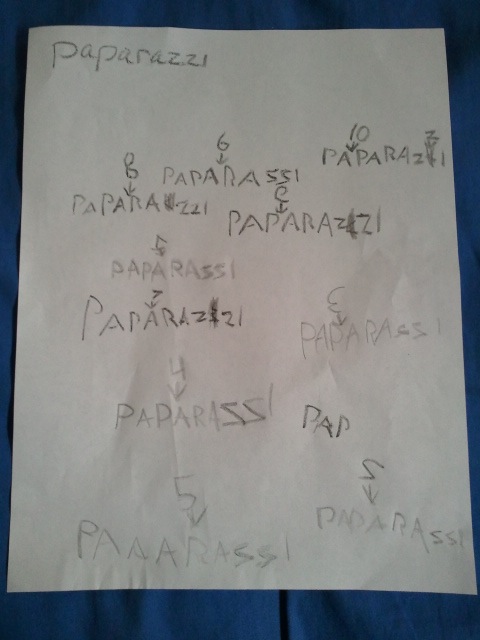“The Lovelaces seem to do the impossible. They are writers who can actually work together day after day without the lightning of clashing temperaments…Maud does all the historical research, Delos all of the plots.”
via Betsy-Tacy’s Deep Valley, a wonderful new blog for Maud Hart Lovelace fans, written by Julie Schrader, author of Maud Hart Lovelace’s Deep Valley. I loved this article about one of my favorite (perhaps my very favorite!) literary couples. Julie’s new blog is a treasure trove for Betsy-Tacy fans—don’t miss it!

My Christmas cactus is just about ready to bloom—yes, in January—timing its display to coincide with the violets. In another two or three days we’ll have quite a show. Lettuce in the garden, daffodils in the flowerbeds, freesia about to bud. At least, that’s what was happening out back a week ago. I feel a bit detached, this week, from the world outside; it’s been downright frigid here in San Diego, and I find I’ve lost the knack of handling weather. No insulation in these little houses. Brr.
Maybe that’s why we picked Winter Holiday for the new lunchtime read-aloud. We so seldom have a winter that feels remotely wintry. It had just the right flavor for today, but it’s quite a long book and I’m wondering how all that tramping about in the snow is going to read when we’re back to our 7o-degree sunshiny days, say around Friday.
January 14, 2013 @ 8:59 pm | Filed under:
Books  Every Monday, Jen and Kellee at Teach Mentor Texts host a What Are You Reading? meme. Since there’s no question I like better, I’ll chime in.
Every Monday, Jen and Kellee at Teach Mentor Texts host a What Are You Reading? meme. Since there’s no question I like better, I’ll chime in.
Things we read around here today:
(To Rilla)
Peter and the Talking Shoes by Kate Banks, illustrated by Marc Rosenthal. I’ve enthused about this one before. One of my family’s longtime favorites. Peter has new (hand-me-down) shoes, whose rich life experience comes in handy when he has to fetch a series of necessary objects for local merchants: a feather to make the baker’s bread light, a key so the carpenter can unlock the door to the house she’s working on, and so on. It’s one of those delightful cumulative tales with a satisfying ending, and Marc Rosenthal’s art is priceless. We have mad love for this quirky book (now sadly out of print).
A Wonder Book for Girls & Boys by Nathaniel Hawthorne. Rilla knows the Greek myths pretty well (thanks to Jim Weiss and D’Aulaire), but it’s hard to beat Hawthorne’s elegant retelling.
(Many times this past week, to all three of my youngest kids)

Open This Little Book by Jesse Klausmeier, illustrated by Suzy Lee. A series of quirky creatures is reading a series of little books, each smaller than the next. Very clever way to play with the convention of the codex. All those adorable nested books are irresistible to my kids. And the art, oh the art: utterly to swoon for.
(To me, at bedtime; at least, that’s the plan)
The Girls of Slender Means by Muriel Spark. So far this is my favorite Spark yet. (I think the Monday meme is for children’s/YA titles only, but I can’t do a roundup without including my own current read.)
How about you?
This baby turned four yesterday. How’s that for a shocker?
Our celebration included a trip to the farmer’s market, where we bought local honey, fiendishly hot salsa, and a gorgeous loaf of cinnamon-apple-walnut bread.
Rilla’s favorite sight: the sea urchins at the fishmonger’s booth.

My favorite sight: this guy’s suitcase drum.

For dinner (stop the presses) I actually cooked! As in, really really cooked, with chopping and browning and basting and everything. Came out yummy, too: Chicken in Prune Butter Sauce.
I have lots to say about things I’m reading, but for now it’s full steam ahead on my Downton Abbey recap, which will go up at GeekMom later this morning. (Here’s last week’s.) Join us for the open thread if you like!
1. Took long walks.
2. Ate cream scones. With jam and more cream.
3. Talked, talked, talked.
Shuffle and repeat for four delicious days. Cap off the visit with a trip to the Chinaberry outlet. (You guys. They had the Freddy Anniversary Collection for four dollars and change. I about died.)
Virginia is way too far away, is what I’m saying.
I’m hosting Downton Abbey open threads over at GeekMom again this year.
Below stairs, tension is introduced in the form of one gangly Alfred, the nephew of O’Brien, whose work history causes Carson to grow extra grizzles in his eyebrows on the spot. O’Brien, undeterred, smoothly manipulates Lady Cora into convincing a distracted Lord Grantham to hire the lad. (Later, upon hearing a new footman has been installed, Lord Grantham will react with the same bewilderment I felt upon seeing Matthew and Mary at the altar.) Alfred, as is required of all new Downton Abbey employees, gets off to a dodgy start: “You’re too tall for a footman,” declares Carson, and you can almost hear the Downton mortar crumbling at the indignity of a former hotel waiter (gasp) serving the family at dinner. (Relax, beautiful house; we’re soon to learn that Alfred is the least of your worries.)
Come join us!
January 6, 2013 @ 8:00 pm | Filed under:
Books 
Books, The New Yorker, December 7, 1946, p. 127


Katharine S. White on Gods and Heroes of Ancient Greece (Pantheon Fairy Tale & Folklore Library):
Of course, much of it is strong medicine and not for young children. But after many weeks of my reading, or at least looking into, several hundred careful, loving, protective, prettily illustrated juveniles, this book of gods and heroes at last seems the real thing.
It is common gossip among the experts in children’s reading—the teachers, the librarians, the critics—that the child of today is a lucky little fellow. Children, say these experts, no longer need be frightened, as their parents were, by grim and brutal fairy tales and by generally unsuitable reading matter. And there is great rejoicing over the abundance of well-illustrated, well-printed books that appear each season. The flowering of children’s literature and graphic art is usually attributed ot the influence of the children’s-book departments in the great city libraries. It is certainly true that there are scores of beautiful, innocuous books, but I’ve begun to wonder whether the sheer quantity of them does not divert children from adult books they otherwise would be reading. I wonder, too, whether our children, immersed in the protective bath of modern psychology, may not be worse off than were their elders without it. The child has become sacrosanct, and, by extension, so has the children’s book. This was made clear to me some time ago at a candlelit meeting at which children’s books were discussed in a spirit of reverent dedication. Like the experts at that gathering, many writers are careful never to approach the child except in a childlike manner. Let us not overstimulate his mind, or scare him, or leave him in doubt, these authors and their books seem to be saying; let us affirm. Somehow, this modern sentimentality seems to me far more insidious than the simpleminded sentimentality of the Victorians. At any rate, the Pantheon book of myth is a good antidote.
That was in 1946. Sendak hadn’t come along yet. (His first published illustrations appeared in a textbook in 1947; his first children’s book, Kenny’s Window, came along in 1956, and the deliciously dark Pierre: A Cautionary Tale, part of the Nutshell Library, in 1962.) Ursula Nordstrom was busily changing the shape of children’s lit in a way I gather Mrs. White approved of—veering away from saccharine morality tales toward immersive, imaginative adventures. What would be fun to see is Katharine White’s take on the prevalence of edgy, black-humor-based books in today’s market: creators like Lemony Snicket and Jon Klassen come to mind. I suspect she’d enjoy their work.
Mrs. White goes on to wax nostalgic about her own childhood encounters with Ivanhoe, Oliver Twist, and David Copperfield (“I made my first inquiry into the mystery of birth because of the puzzling phrase on the first page: ‘I was born with a caul.'”) and then remarks that publishers seemed afflicted with the same nostalgia, given the number of classic reprints on their lists. Alas, she reports,
“No publisher has thus far reissued the set of books I read oftenest—the Andrew Lang collections of folk and fairy tales known to my generation as ‘the colored fairy books.’ I owned the Blue, the Red, the Green, the Yellow, the Pink, the Grey, and the Violet.”
Originally published in the late 1800s/early 1900s, these collections were back in print during my own 1970s/80s childhood, and I hunted the various shades of the rainbow in every Aurora, Colorado library branch within biking distance of my parents’ house. I still have my treasured paperback copies of the Blue Fairy Book and the Green Fairy Book, which have made their dogeared way through my children. Nowadays, the Lang fairy books have reappeared as mainstays of legions of Charlotte Mason-inspired homeschoolers, and just last week I uploaded a copy to my Kindle, the better to enjoy its charms (augmented by enlargeable font) with Rilla.
A handful of the new books Mrs. White reviews in this 1946 column are still with us, prized among the kidlit enthusiasts and living-books homeschoolers—Miss Hickory, Justin Morgan Had a Horse, d’Aulaire’s Pocahontas (“an unqualified delight,” she says, unaware of the many qualifications a 21st-century audience would pile onto it—though not nearly as many as necessitated by d’Aulaire’s Leif the Lucky, whose ending recently made me wince and end the read-aloud a couple of pages early)—but most of the season’s new offerings are titles unfamiliar to me, including books by Lois Lenski and Garth Williams.
Katharine White’s children’s-book reviews are almost as much fun as her gardening columns, and if you have access to the New Yorker digital archive, it’s worth your time to pop in and read her take on a selection of books that have, for the most part, come and gone.
Related: Dear Genius: the letters of Ursula Nordstrom


 Every Monday, Jen and Kellee at
Every Monday, Jen and Kellee at 




